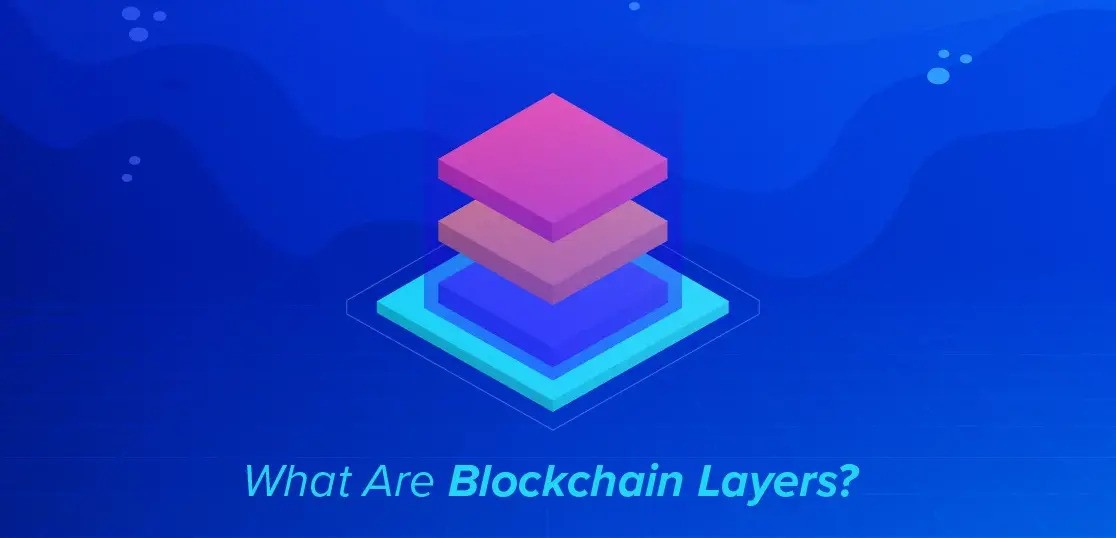What Are Blockchain Layers?
 Pankaj Sharma
Pankaj Sharma
Introduction
Blockchain technology, often hailed as revolutionary, operates on a complex yet fascinating structure composed of distinct layers. Like the layers of a cake, each element serves a unique purpose, contributing to the integrity, security, and functionality of the blockchain system. From reaching consensus on transactions to executing smart contracts and facilitating user interactions, these layers form the foundation of decentralized networks. Aspiring Blockchain experts can join the Blockchain Course to learn more about the layers and use this technology more effectively.
In this article, we will delve into the world of blockchain layers and their significance. We shall also discuss how they work together to redefine the landscape of digital transactions and decentralized applications. Keep reading this section for more information.
Everything You Need To Know About Blockchain Layers
Imagine a blockchain as a digital ledger, or a record book, that stores information in blocks linked together in a chain. Now, to make this ledger more efficient and capable of handling various tasks, we divide its functionality into different layers, much like layers of a cake. Each layer serves a specific purpose and adds functionality to the blockchain system.
Let us look at each Blockchain layer in details.
Layer 1: Consensus Layer
The first layer of a blockchain is the Consensus Layer. This layer is responsible for ensuring that all participants in the network agree on the validity of transactions and the order in which they are added to the blockchain. Think of it as the referee in a game, making sure everyone plays by the rules.
Different consensus algorithms, such as Proof of Work (PoW) or Proof of Stake (PoS), govern how agreement is reached among participants. For example, in PoW, participants compete to solve complex mathematical puzzles to validate transactions and create new blocks.
Layer 2: Network Layer
The Network Layer is like the communication infrastructure of the blockchain. It facilitates the exchange of data and information between nodes, which are the computers or devices connected to the blockchain network. Furthermore, this layer ensures that transactions are broadcasted, propagated, and received by all nodes in a secure and reliable manner.
Protocols like TCP/IP (Transmission Control Protocol/Internet Protocol) are often used in the network layer to ensure that data packets are transmitted efficiently and without errors across the network.
Layer 3: Data Layer
The Data Layer is where all the transactional data is stored. It consists of the actual blocks in the blockchain, each containing a batch of transactions. Additionally, this layer may include a distributed database or storage system to store other relevant information, such as smart contracts or digital assets.
Blockchain platforms like Ethereum utilize a distributed storage mechanism to ensure that data is replicated across multiple nodes, enhancing redundancy and fault tolerance.
Layer 4: Smart Contract Layer
Smart contracts are self-executing contracts with the terms of the agreement directly written into code. The Smart Contract Layer provides a platform for deploying, executing, and managing smart contracts on the blockchain. These contracts automate the execution of specific actions when predefined conditions are met, without the need for intermediaries.
Platforms like Ethereum introduced smart contracts, enabling developers to build decentralized applications (DApps) with automated and trustless functionality. Moreover, the Blockchain Course provides detailed guidance on the various layers and their functions in a Blockchain.
Layer 5: Application Layer
Finally, we have the Application Layer. It is where end-users interact with the blockchain system. This layer consists of various decentralized applications (DApps) built on top of the blockchain infrastructure. These applications can range from financial services like decentralized finance (DeFi) to supply chain management and voting systems.
Popular DApps like Uniswap (a decentralized exchange) and CryptoKitties (a collectibles game) operate at the application layer, providing users with different functionalities and experiences.
Conclusion
In summary, blockchain layers provide a structured framework for understanding and organizing the different components of a blockchain system. The layers are necessary for tasks like reaching consensus and managing data to executing smart contracts and interacting with applications. The Blockchain Course in Delhi provides the best training to the learners to use the Blockchain technology more effectively. Each layer plays a crucial role in the overall functionality and success of the blockchain ecosystem. By breaking down the blockchain into these distinct layers, developers can design more scalable, secure, and versatile blockchain applications to meet the needs of users across various industries.
Subscribe to my newsletter
Read articles from Pankaj Sharma directly inside your inbox. Subscribe to the newsletter, and don't miss out.
Written by

Pankaj Sharma
Pankaj Sharma
Hi, I’m Pankaj Sharma from Noida and working as an educational blogger.